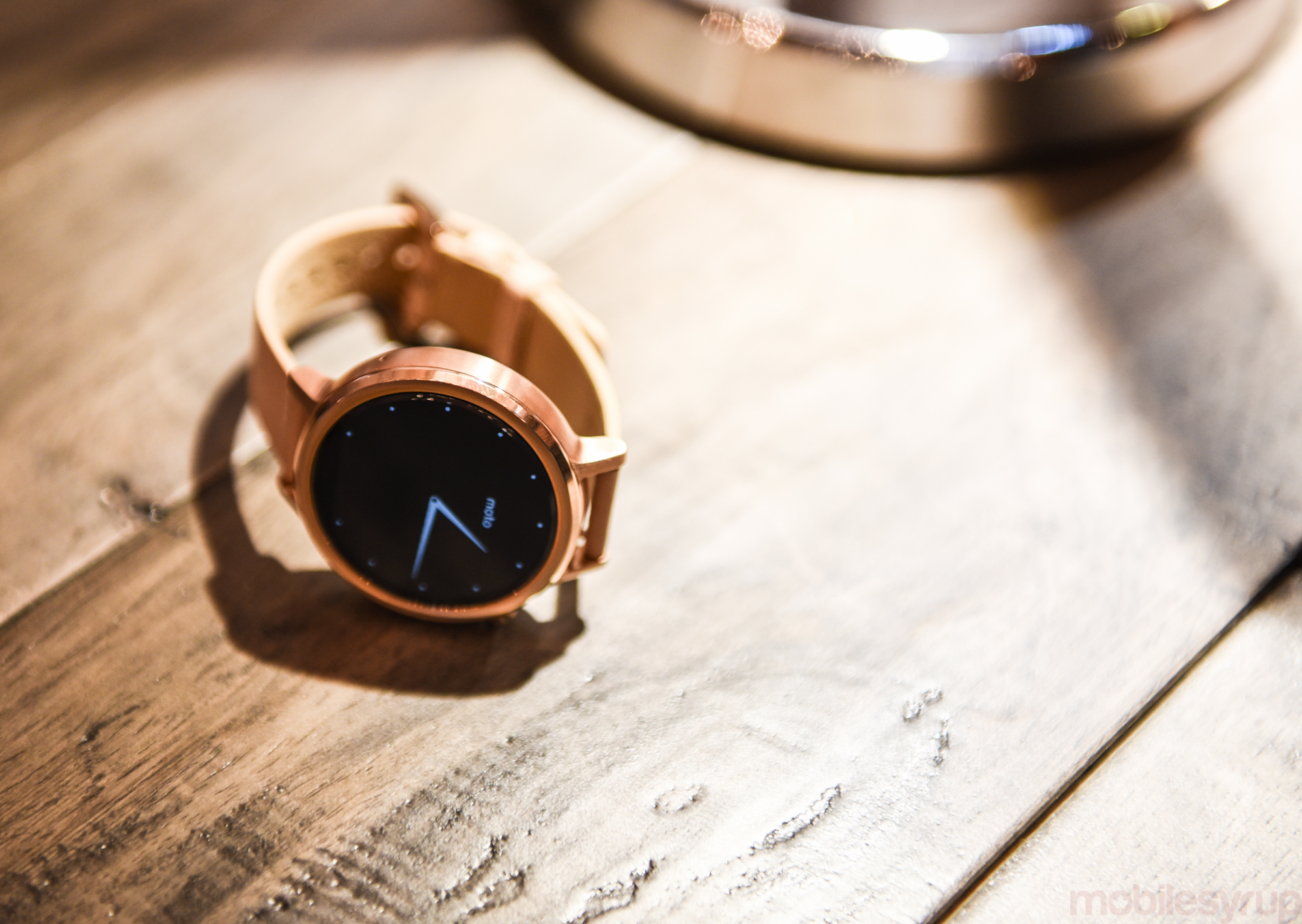
Over the years, many electronics manufacturers have been guilty of the “shrink it and pink it” approach when it comes to designing devices specifically for women. The logic being that shrinking an existing product and offering it in pink is a viable marketing stragery for the female demographic. This is something we haven’t really seen in the smartwatch segment. Manufacturers seem more concerned with creating a generally stylish product.
Over the last few years, we’ve seen companies debut their watches with a number of different band options. Though it wasn’t the first to offer a smartwatch with different band options, Apple’s approach for selling the Apple Watch was similar but much more comprehensive. Rather than offering one base model and a handful of band options (which is what most companies have done), Apple launched three different lines (the Edition, the Watch, and the Sport) with countless different bands for a combined total of 38 different versions of the Apple Watch. The message is clear: this is a watch for everyone.
It’s a strategy that seems so obvious: if you’re trying to sell as many watches as possible, the last thing you want is customer telling you they would have bought it if only it came in yellow (or pink, or gold, or black, or grey, or brown) or was just a shade smaller. And if something as minor as the colour is the difference between sale or no sale, it’s a no brainer, right?
The first wave of smartwatches did have multiple band options, but they were mostly blue, black, and brown, and no one was doing multiple sizes until Motorola debuted slimmer bands for the Moto 360 in the fall of 2014. At the time, the company said the slimmer band was for “smaller wrists and for people who want a different look,” though many people drew the conclusion that Motorola was targeting women with the new 18mm band. Apple markets the Apple Watch in the same way. It probably knows that a woman is more likely to go rose gold than a man, but it doesn’t market any of the Apple Watches to one gender or the other. The customer draws their own conclusion based on personal taste, just like with the slimmer bands Motorola offered last year.
Fast forward one year and Motorola’s method for marketing slimmer bands has changed dramatically, and maybe not for the better. With the second gen Moto 360, Motorola has ditched its gender-neutral approach in favour of a line of watches just for men and a separate line for women. Motorola actually has two different sized watch cases along with multiple band sizes. Last year’s 46mm footprint lives on in the men’s line, while the Moto 360 for Women is a more compact 42mm.
The women’s band measures 16mm wide (compared to the 18mm gender-neutral slim band released last year) while the men’s line has two different band sizes: a 22mm that matches the strap on the original 360, and a narrower 20mm band. What some people may take issue with is that Motorola has decided that the larger size should be for men only and and the smaller size for women. Not only that, but men have a small and large option, while women are offered just one size.
Motorola’s reasoning for distinct men’s and women’s lines is that the watch and jewelry industries are constantly differentiating based on gender. Motorola also thinks there’s a market for smartwatches designed just for women. That makes sense. In a sea of “blocky and black,” they want women to feel included and catered for, espeically when new and exciting device categories emerge. However, a direct comparison to the watch or jewelry industry isn’t necessarily fair either, given smartwatches are, first and foremost, consumer electronics. This is an area that has, for the most part, been gender neutral. Men and women expect to walk into a jeweller and be directed to a certain side of the store, but that’s not something you expect when you’re shopping for a phone, laptop, or tablet. It’s possible a woman will balk at the idea of the sales representative in Best Buy not even showing her the Moto 360 for Men because it’s not “for” her.
The bottom line is that smartwatches (and wearables in general) exist in uncharted territory, so there is no right answer here. Aside from the fact that every woman will react differently to these watches, the tech industry hasn’t yet figured out whether a smartwatch is more gadget than accessory (or vice versa). It’s possible consumers will respond very well to gender-targeted designs and marketing campaigns. After all, many believe the best way to market and sell a wearable device is through traditional clothing and accessory retailers rather than electronics stores. If that’s true, the “jewelry and watches” approach could be a winner. Conversely, though, in its attempt to be inclusive, Motorola risks alienating women who prefer a larger watch face or chunkier band. Especially when men have more options.
It’ll be interesting to see if women react to this in the same way as “shrinking and pinking” attempts from electronics manufacturers become commonplace, or if they’re drawn to these more feminine options in the same way they are traditional jewelry.
MobileSyrup may earn a commission from purchases made via our links, which helps fund the journalism we provide free on our website. These links do not influence our editorial content. Support us here.


